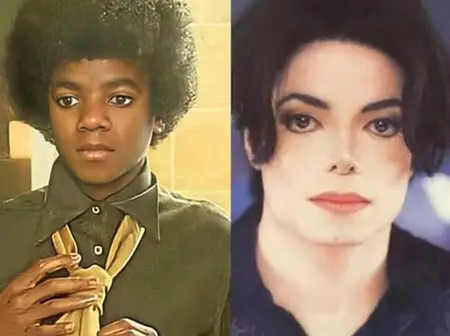Few celebrities have endured as much public scrutiny and speculation as Michael Jackson, particularly regarding his physical appearance. Among the most controversial and misunderstood aspects of his transformation was the dramatic change in his skin color over the years.
For decades, rumors swirled that the King of Pop intentionally bleached his skin to appear white. However, the truth is both medically documented and publicly confirmed: Michael Jackson had vitiligo, a chronic skin condition.
Vitiligo is a skin disorder characterized by the loss of pigment-producing cells called melanocytes. This results in patches of skin losing their color, often progressing over time. It can affect any part of the body and people of all ethnicities, though it is more noticeable on individuals with darker skin tones. The exact cause of vitiligo is not fully understood, but it is believed to be an autoimmune condition, and it often runs in families.
Michael Jackson publicly acknowledged that he had vitiligo during a 1993 interview with Oprah Winfrey, stating, “This is the situation. I have a skin disorder that destroys the pigmentation of the skin. It’s something that I cannot help.” He also explained that he used makeup to even out his skin tone due to the irregular patches caused by the condition.
His autopsy report, released after his death in 2009, confirmed the diagnosis. The report stated: “Vitiligo is present.” This medical documentation put to rest much of the speculation regarding the origins of his skin color change, affirming that it was due to a legitimate health condition, not a cosmetic choice or an attempt to appear white.
For someone constantly in the public eye, especially a performer with such a large fan base, managing vitiligo was not only a medical concern but also a psychological and aesthetic one. Jackson reportedly used prescription creams to even out his skin tone once depigmentation became widespread. Dermatological treatments like this are sometimes prescribed to people with extensive vitiligo to create a more uniform appearance.
Despite the evidence, misinformation about Michael Jackson’s skin color persisted for years, often fueled by sensationalized media coverage and public misunderstanding. This not only distorted the truth about his medical condition but also reflected broader societal issues around race, identity, and the stigma associated with skin disorders.
Jackson’s experience is a reminder of the challenges faced by those living with visible health conditions, especially in an image-driven culture. It also underscores the need for sensitivity and accuracy when discussing such personal matters.
Michael Jackson did not bleach his skin to appear white. He suffered from vitiligo, a medically recognized skin disorder that gradually altered his appearance over time. Rather than a symbol of denial or self-rejection, his changing skin tone was a deeply personal and involuntary aspect of his life. As with many public figures, separating myth from fact is crucial—not just for the sake of truth, but for the dignity of the individual involved.

Leave a Reply